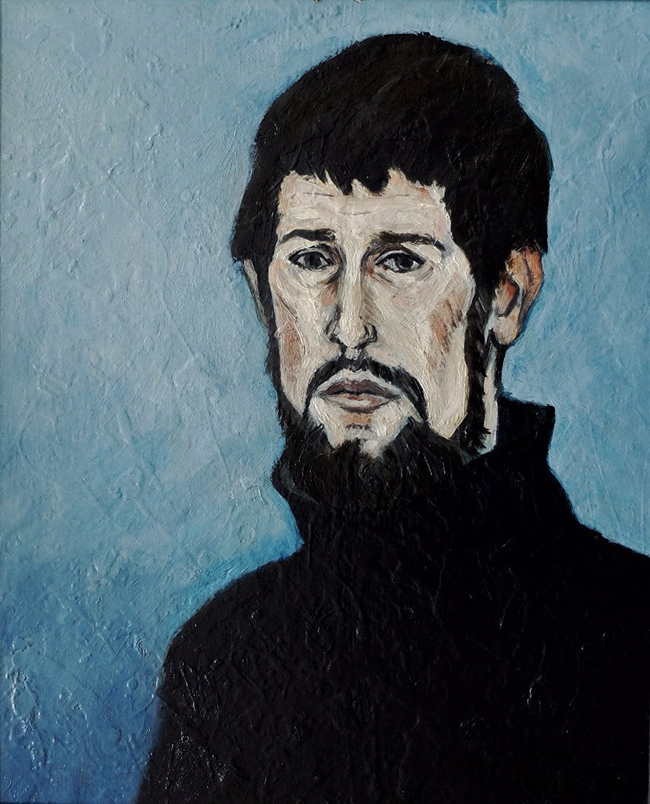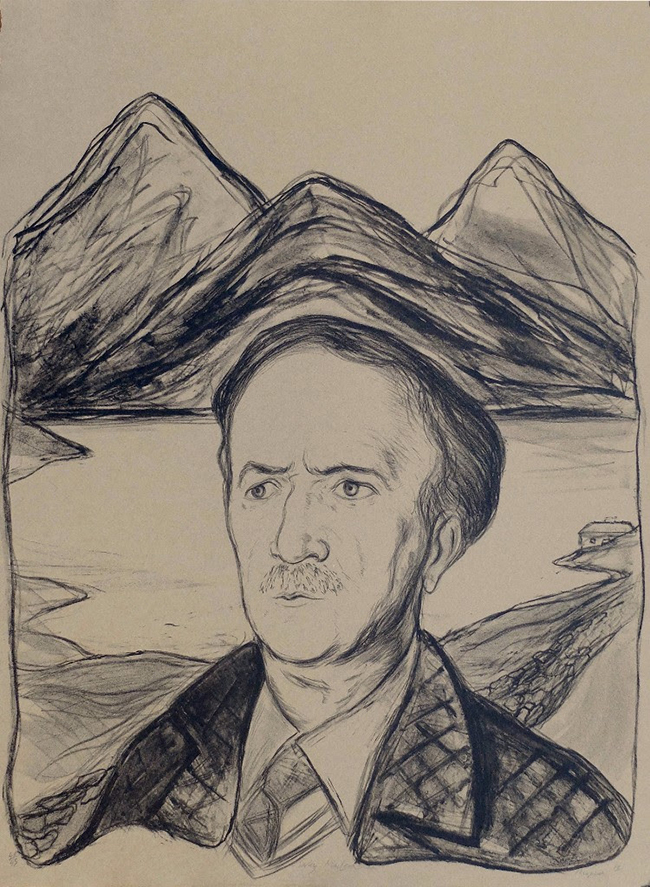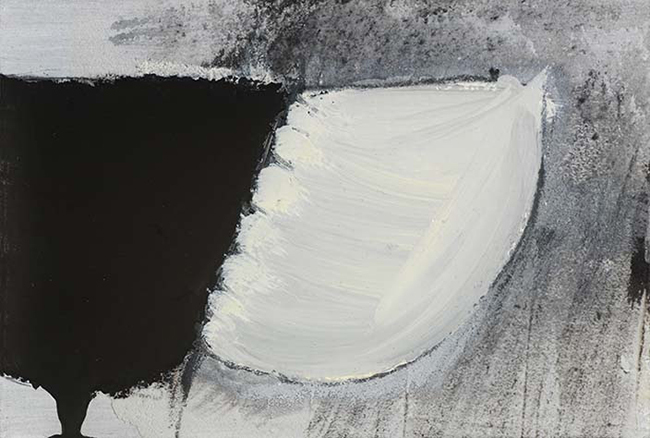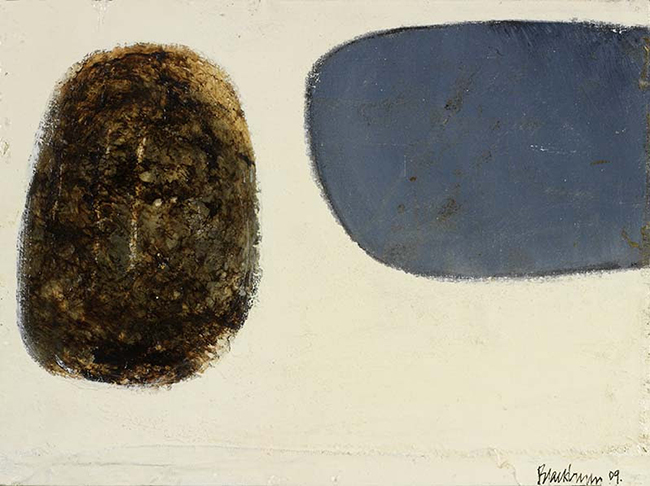The work of two artists is being put on show at an Edinburgh gallery from this week.
The Open Eye Gallery presents an exhibition of portraits by Alexander Moffat OBE RSA timed to coincide with the publication of his monograph, A View of the Nation (Luath Press). With text by Bill Hare, the book charts Moffat’s eminent career as a portraitist of the greats of modern Scottish culture. The exhibition includes portraits of poets involved in Hugh MacDiarmid’s Scottish Renaissance as well as renowned Scottish artists Alasdair Gray, Adrian Wiszniewski, Peter Howson and Ken Currie.
Also on show will be another exhibition, selected by art historian and critic, Dr Ian Massey. This exhibition gathers work from John Blackburn’s studio made over the course of the artist’s long, prolific career. This, Blackburn’s second solo exhibition at the Open Eye Gallery, shows the artist’s philosophical approach to be central to the conception and success of his work.

A self portrait of Alexander Moffat OBE
Both exhibitions will run from 10-29 January.
In the first half of the 20th century, the move from figurative painting towards impressionism and abstraction resulted in the decline of portrait painting in Scotland. Moffat, who was born in Dunfermline, along with his friend John Bellany, contributed to the resurgence of figuration in Scottish art in the second half of the century. Whilst students at Edinburgh College of Art, Moffat and Bellany were encouraged by the then head of painting, Sir Robin Philipson HRA PRSA RSW, to rebel against the decorative principles of the older generation.
Intending to challenge institutional tastes, in 1963 Moffat and Bellany mounted their paintings to the railings of Castle Terrace during the Edinburgh International Exhibition. In the following two years they displayed their work outside the buildings of the Scottish National Gallery and the Royal Scottish Academy, symbolically stating their status as outsiders to the art establishment. The pair endorsed figurative painting that portrayed a modern Scotland set within the industrial age.
Looking abroad for influence, Moffat became interested in the German New Realists and the monumental art championed by French artist, Fernand Léger. His strongly coloured grounds and lyrical use of line show other European influences, particularly that of Matisse and Picasso. Indeed, the self-portrait featured in this exhibition is a homage to Picasso’s 1901 self-portrait.

Sorley MacLean, drawn by Alexander Moffat
These outward looking, international intentions chimed with the work of poet Hugh MacDiarmid and the Scottish Renaissance movement. MacDiarmid’s call for an epic, national art in Scotland had a profound and lasting impact on Moffat who would later become the documentarian of the poet’s circle which congregated in pubs on Rose Street, Edinburgh.
The exhibition includes a lithograph showing poet, Sorley MacLean, with a sublime Highland landscape in the background. The portrait brings the poet into relation with the landscape to associate his voice with Scottish national identity.
In John Blackburn’s Paintings from the Studio, mixed materials, sometimes featuring resin, grit, house-paint and varnish, are layered onto the distinctive surfaces of Blackburn’s paintings before they are completed with acrylic, oil and encaustic.

John Blackburn’s Black and White
Incorporating found objects, Blackburn roots his work firmly in the present world but seeks metaphorical connections to the physical and spiritual body. Using, as he puts it, ‘everything and anything,’ his work draws parallels with Arte povera artists, Alberto Burri and Antoni Tàpies.
The implication of the previous existence of objects within Blackburn’s work lends it a transitional quality that relies on a balance between the basal origins of his materials and the spiritual intonations of his metaphors. With nods to the textural viscerality of post-war European artists, Wols and Jean Fautrier, Blackburn melds the refuge of daily life into his work to produce imagery rife with corporeal meaning.
Despite its initial appearance as impersonal, enigmatic statement, at its core Blackburn’s work relates to the human condition. Massey describes this as an ‘emphatic humanism’ expressed through an ‘abstract vocabulary’. Blackburn’s abstraction is replete with autobiographical and philosophical meaning.
Born in Luton in 1932, he escaped the austerities of post-war Britain to live in New Zealand, Malaysia and the Pacific Islands. The lumps, drips and folds built onto his canvases evoke the scarred landscape in which the world had to rebuild after the Second World War. Alongside this, moments of rich colour within a largely tonal palette look to the intense light of New Zealand.

John Blackburn’s Two Forms (Blue Black)
Blackburn has said: ‘Life itself is terribly dangerous, terribly cruel, terribly rewarding. All these things at once. This multi-faceted, wonderful jewel – which we all live with and die with – is there. We’re saddled with it, like it or not.’
Both the terror and joy of life lived through the accelerating impact of modernity in the twentieth century emerge in Blackburn’s paintings. Molten blacks of mechanisation collide with soulful, sunny yellows and scratched wax becomes scorched earth when placed next to soft brushstrokes of fragile flesh.
The exhibitions will take place at the Open Eye Gallery, 34 Abercromby Place, Edinburgh EH3 6QE. The Open Eye Gallery, based in the New Town, has been running for 30 years and holds 32 exhibitions per year focusing on contemporary and applied art.
They will be open from 10-29 January, open Monday-Friday from 10am-6pm, and on Saturdays from 10am-4pm.
TAGS

